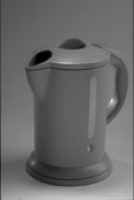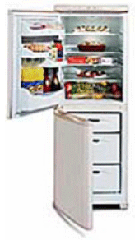Sustainable Design Awards Toolkit
3.1 - Single Issue (Or �Swift�) Approaches1
The aim of ecodesign, in addition to fulfilling all the usual production,
functional and aesthetic requirements, is to minimise environmental impacts
at every stage of the product's life � from materials extraction and processing
through to manufacture, distribution, use, recycling and/or disposal. It is this
life cycle perspective that has formed the cornerstone of ecodesign and won
the support of responsible governments, the global environmental movement
and numerous influential companies. The following methods make no
pretences about accuracy or depth; they are, as suggested in the title, swift
single-issue approaches that concentrate on one element of ecodesign and
relate to different stages of the life cycle. However, they do not take the time
or expense involved in the more accurate and holistic ecodesign approaches
that follow, and they may yield significant environmental benefits.
These single issue strategies can provide inspiring ideas, but it must be
recognised that if only a �single issue� is addressed without reference to the
whole life cycle then there can be unintended �side effects�. Consider
reducing the weight of a component for example. Could this mean a weaker,
more fragile component that breaks sooner? Or packaging that does not
protect the product as effectively? It can be seen that not fully thinking through
the issues can lead to unintended and undesirable outcomes. Even
extending the product life is not always the way forward � what if the result is
the continued use of inefficient, obsolete technology which continues to be
used to the detriment of the environment? The following table gives a range
of single issue approaches, but it is an interesting exercise to think about
each one and try to work out if there is any way you can imagine it �going
wrong�. Considering the whole life cycle is the only real way, but this needs a
little more time effort and expertise. The next section describes whole life
cycle methods, but read through the table of single issue approaches first and
think carefully about their implications.
An overview of single issue approaches and some examples
| Raw Materials |
� |
Design for
resource
conservation |
Use the minimum amount of material required:
weight reduction is one of the critical objectives in the
design of a product. It reduces the cost of manufacture,
saves resources and energy, and there is less material
to be recycled or disposed of at the end of the
product�s life. The amount of material used can be
reduced in many ways, for example:
� Achieving extra strength by adding bosses, gussets
or ribs rather then using thicker material.
� Designing product casings to fit over functional
parts snugly
Use materials which are renewable:
renewable
resources are those that can be easily replaced with no
detrimental impact on the environment. They include
materials that are made from plant or animal sources
(which have been harvested on a sustainable basis).
Typical raw materials that are considered renewable
include timbers, paper, cardboard, starch or sugar
based plastics, and soy based inks and vegetable dyes
Use recycled and/or recyclable material
commonly
used materials can be easily found in recycled form,
these include steel, aluminium, paper, cardboard,
plastics, rubber and glass. The use of recycled material
saves both resources, as raw materials are not being
used, and energy, as those raw materials do not need
to be extracted, processed and manufactured.
In many cases recycled materials perform as well
as virgin materials.
|
Examples � recycled aluminium uses 23 % of
the energy required to make virgin aluminium.
Recycled plastic uses 35% and glass uses
88% of the energy required to make their
virgin equivalents |
Plastics, however, have been
seen to degrade during the recycling process.
Processing temperatures are quite low for recycled
plastic and therefore may inhibit their use in
products that come in contact with food; this is as
some microbial contaminants may not have been
destroyed. It is, however, viable to use recycled
material for the bulk of the product and then to
encase it with virgin material to protect the food.
Example � coca cola uses multi-layered PET for
their soft drinks bottles. |
|
| Design for low impact materials |
Avoid materials made from toxic or hazardous
materials:
toxic substances are those that cause
serious health effects such as poisoning, respiratory
problems, cancer, nervous system breakdowns or birth
defects. Material suppliers have material safety data
sheets on each material supplied that give information
on the material including any health risks.
Designers should specify organic pigments in
colours, plastics and paints and use
environmentally sensitive textiles such as organic
cotton, hemp, polyester fabric made from recycled
PET bottles, and wool.

Recycled and spun in an innovative way, the 2-litre soda bottle works brilliantly as the base material for Synchilla�, a signature Patagonia fleece. More than 150 Synchilla garments are made from 3,700 recycled 2-liter bottles. This saves a barrel of oil (42 gallons) and avoids approximately half of a ton of toxic air emissions.
(Source: http://www.patagonia.com) |
Minimise use of greenhouse gases:
the major
greenhouse gases are: carbon dioxide, methane,
carbon monoxide, and oxides of nitrogen, some
organic compounds and perfluorocarbons. The energy
sector is the largest contributor of greenhouse gases. Emissions from production processes are also a high contributor.
Use materials with low embodied energy:
embodied energy is the energy used directly or indirectly to manufacture a material. The embodied energy of a material can vary dramatically between suppliers. Where possible the design should specify materials from the most energy efficient supplier.
|
| Manufacturing |
� |
| Design for cleaner production |
Minimise the variety of materials used:
this not only simplifies ordering and stock keeping but can also reduce the amount of waste generated and makes it easy to recycle any waste produced. Minimising the number of materials within the product also makes recycling at the end of the product's life easier.
Avoid waste of materials:
the cutting of material should be planned to ensure the minimum amount of waste from each sheet or roll of material. Using the same material for different components will allow greater flexibility in planning to avoid waste.
Reduce the number of components and assemblies:
this can be done in many ways, for example integrating many functions into one component or assembly, or simplifying the way in which the product is assembled. Reducing the number of components is not only environmentally attractive but also reduces tooling and material costs and the amount of processing energy required.
|
| Distribution |
� |
| Design for efficient distribution |
Reduce weight to save energy in transport:
reducing the weight of the load being transported can reduce fuel consumption. Reducing the number of components or the overall size of the product, by using alternative solutions to using thicker material for added strength and reducing the amount and weight of the packaging used can all reduce the overall load weight.
Design re-usable or recyclable packaging:
reusable packaging is desirable where there are short distribution distances, frequent deliveries, and a small number of parties involved and when companies own their own distribution vehicles. Recyclable packaging should be made from only one material (or compatible or easily separable materials) and those materials should have an established recycling system.
Maximise efficiency of packaging to save space:
efficiency can be improved by reducing the amount of material required to contain a given shape, packing products in their concentrated form and using flexible rather than rigid packaging.
| Example � flat pack furniture requires less packaging and allows many more units to be contained in a transport vehicle than would be possible in the product's assembled state. This enables more products to be transported at once, reducing the number of fuel consuming journeys that have to be made. |
Choose an efficient transport system:
rail is more efficient over long distances than road, while
road travel appears more efficient for short distances or multi-destination
loads. Efficiency must also take into account the transport
system's proximity to the production centre, the volumes and
densities of the loads and the type of load being carried. |
| Use |
� |
| Design for energy efficiency |
Use renewable energy supplies where feasible:
these include wind, solar, hydro and tidal power, rechargeable batteries and kinetic energy.

Example � many windfarms are based off shore to allow many wind turbines to be placed together without becoming a land-based eyesore.
Source: http://www.ten ten.org/windfarm.htm |
Minimise standby power consumption:
energy used to maintain an appliance in readiness for operation, or to run digital displays or indicator lights, can often be significant.
| Example � the 5 watts often required to run the digital displays of a microwave oven can, over its life, exceed the amount of electricity used for cooking in the appliance. |
 |
Minimise warm up time:
when a system starts up and shuts down there are often transient losses as components heat up or cool down.
| Example � household water pipes may hold several litres of water that must be replaced before the user receives hot water, yet this water was once heated. |
Evaluate usage patterns:
to identify potential to store useful heat, carry over energy for next task
| Example � improving a product's insulation may allow a smaller compressor or heating system to be used |
|
Example �fans and lights within refrigerators create heat loads that must be removed by the compressor system, optimising the efficiency of these processes is essential. |
Lightweight moving components:
heavy components require more energy to be moved, by creating lighter moving parts energy can be saved.
|
| Design for water conservation |
Use filters to allow water recycling:
wherever possible water should be recovered and reused. This
may require installing filters or more sophisticated cleaning
mechanisms.
Use customer feedback mechanisms to encourage efficient use:
by finding out how much water is being consumed at certain times, efficiency can be improved. Providing feedback for the user may also lead to increased awareness and reduced water consumption.
Example � the 'Axis' Ecokettle designed at RMIT has the water gauge situated on the lid of the kettle making it easier to read. By only boiling the required amount of water substantial energy savings are achieved.
An indicator was also added to show the user that the water is still sufficiently hot to make a beverage without having to re-boil.
|
 |
Source: http://www.co design.co.uk/eco.htm
|
| � |
Minimise the use of disposable components:
the quantity of other products consumed during use should be minimised (e.g. coffee filters, batteries, toner etc.) All of these products consume materials and energy in manufacture and contribute to solid waste once used.
Design consumables for end of life:
consumables should be designed for reuse, remanufacture or recycling.
| Examples �Ni-Cad batteries can be recharged by users and reused, toner cartridges can be sent back to the company for remanufacture and plastic water filter cartridges are recyclable. |
Provide clear instructions on use, and end of life:
consumers should be provided with clear information about dosage, how often the consumable must be replaced and/or how the product can be recycled2.
| Example � laundry detergents now commonly come with dosage indicators to ensure the correct amount is used |
�
|
| Design for low-impact use |
Minimise or avoid the use of formaldehyde;
formaldehyde from particleboard and other VOCs from paints and
other products contain solvents that contribute to pollution
and health problems. Composite timbers are available without
harmful solvents for example the dulux breathe easy range of
decorative paints. Composite timbers are also available that
use urea based glue to reduce off gassing.
Avoid products that emit volatile or organic compounds:
information on the safety of materials can be requested from suppliers.
|
| End of life |
� |
| Design for durability |
Use durable materials:
the designer should specify durable materials and avoid colours or designs that may go out of fashion quickly.
Eliminate potential weak points in the design:
careful analysis of designs to identify and address weak spots will reduce the rate of damage, particularly to operational parts.
Ensure that the product is designed for likely misuse:
designing the product to withstand misuse will extend the life of the product.
Design for easy maintenance and repair:
it is preferable that this maintenance can be carried out by the owner.
Use modular designs to enable future upgrades:
products can be upgraded easily if components can be removed and replaced easily. Electronic parts such as audio equipment, computers, and other household appliances become old very quickly. The ability to remain current cheaply will be seen as an advantage by consumers and lead to commercial advantage as well as being of environmental benefit. It allows the product to remain current without the need for total product substitution. This will also reduce the amount of solid waste being produced
|
| Design for re-use |
Minimise life cycle impacts of reuse:
products that can be reused have a lower impact on the environment then single use products. Life cycle environmental impacts need to be considered during the design process to minimise the impacts of reuse; for example from collection and cleaning.
Use durable materials to protect against damage:
the more durable the product, the more likely it can be reused. It must be able to withstand repeated collection, handling, washing and refilling. It must also meet health and safety standards each time it is reused; this is especially important for food and beverage containers.
Use in mould labels for packaging rather than paper or plastic labels:
additional labels can 'wear off' over time and may prohibit reuse. Packaging can be reused in many ways including:
�return to the manufacture for refilling;
�return to the retailer for refilling, or;
�re-use in the home.
|
| Design for re-manufacture |
Use a modular design so that damaged components can be replaced:
remanufacture involves the collection of used products, disassembly, replacement or repair of damaged components, assembly and resale.
| Examples � old toner cartridges can be taken to a retailer where they will be sent back to the manufacturers for refilling and resale. Dairies collect some milk bottles for refilling. The body shop offers a return system for selected products. An alternative example is refillable containers that the consumers refill themselves at home, such as fabric conditioner. |
Use fasteners and joints that will not be damaged by assembly and disassembly:
any disassembly and assembly that is required must be easily done and not break parts of the product unnecessarily.
Use decorative finishes which are easy to maintain:
see design for durability above.
|
| Design for disassembly |
Minimise the number of separate components:
therefore reducing the time taken to disassemble them.
Avoid glues, metal clamps and screws. Use snap fits for fastening and joining parts:
'push, hook and click' assembly methods are preferred over additional materials as products are easier to pull apart.
Provide break points for separation:
designing interconnections points and joints to be easily accessible for opening, loosening or separating by hand allows components to be disassembled quickly.
Make fasteners from compatible materials:
fasteners that can be recycled with the components that are being joined will considerably reduce the disassembly time. (See Design for recycling below.)
Use ultrasonic welding for compatible plastic parts:
ultrasonic welding fuses two plastic components together, omitting the need for additional materials. This allows the whole component to then be recycled without any disassembly.
Design the product as a series of accessible modules:
these modules can then be disassembled quickly and easily for replacement, reuse or recycling.
Minimise the number and length of connecting cables and wires:
the fewer wire connections, the less time to disassemble them!
Locate non- recyclable parts in one area: this is especially helpful if these form their own module as it can then be easily removed for reuse or disposal.
Locate parts with the highest value in one area:
if it is impossible to disassemble the whole product (due to time or cost for instance) designers should ensure that components of highest value are in one easily accessible area to ensure that they are removed for reuse, remanufacture or recycling.
|
| Design for recycling |
Minimise the number of materials used:
if it is necessary to use more than one material, use as few as possible and make them easily separable. For plastic products ensure the compatibility of the different materials.
Avoid the use of composite materials:
composite materials are those made of one or more materials. The materials used may not be compatible with each other and therefore may eliminate the possibility for the product to be recycled.
Avoid using labels, adhesives, and finishes that may contaminate recycling
Use water-soluble adhesives for labels:
these can then be easily removed to allow the material to be recycled.
Use integral finishes rather than paint or coatings;
this allows the product to be ready for recycling without having to go through any extra processes.
Use water based rather than solvent based coatings:
solvent based coatings are not only environmentally unfriendly but also reduce the ability of the product to be recycled.
Ensure compatibility of ink where printing is required:
incompatible ink will contaminate and ruin the recycling process.
Eliminate incompatible labels on plastic parts:
it is preferable to create 'in-moulding' labels for plastic components as these do not require any extra material or processing energy (as well as reducing visible signs of wear and tear and promoting reuse) Otherwise ensure the use of compatible labelling material or labels that can later be removed.
Ensure that hazardous parts are clearly marked and easily removed: this will reduce the possibility of contamination that will ruin the recycling process.
Use in-mould identification symbols for plastic resins:
there are standard international codes for each type of plastic which enable them to be identified for recycling.
Use only one material or compatible materials:
these are the easiest and cheapest to recycle. This is of
particular concern with plastics, which have different specifications
and processing requirements.
|
| Design for degradability |
Identify likely disposal routes and use biodegradable materials wherever possible:
design for degradability is only viable if the product is likely to be disposed of in a composting facility or a bioreactor landfill (normal landfill are sealed and capped to prevent degradation and leaching into the environment). Materials that degrade easily include paper, cardboard and starch based plastics.
Provide instructions for composting or collection:
it is important to educate the user about how to dispose of the product in the best possible manner.
|
| Design for safe disposal |
Avoid the use of toxic or hazardous materials:
products should be designed for safe disposal at the end of their life. Toxicology combines knowledge of chemical composition, dosage, background levels, and their multilevel effects on animals (including humans) and other biotic systems. It is beyond the realm of most industrial designers; however, we can follow a few basic guidelines.
Does the reference product create large quantities of chemical waste over its lifetime (disposable batteries, film waste, water emissions from metal plating, exhaust from fuel combustion, ozone layer destroying chemicals, etc.)? How can the same quality of product be delivered, that eliminates or significantly reduces these emissions?
Inks, dyes, pigments, stabilisers, solders and adhesives that contain toxic substances that can contaminate surface or ground water and should be avoided.
Provide disposal instructions: if toxic materials are used ensure that the product is adequately labelled with instructions for decontamination and disposal.
|
| Provide the service in an innovative way |
Redesign the way in which the need is addressed.
reflect on the primary service that your product delivers, and conceptualise possible ways that this service can be delivered with lower ecological impact. For instance, alternatives to automobiles include public transportation and bicycles. The service of a television with a 30-inch cathode ray tube can also be had with a more energy efficient projection TV or LCD display. An alternative to the wasteful daily half-pound newspaper is accessing your most wanted news via the World Wide Web. |
1 References: IDSA �Introduction to swift approaches�(http://www.idsa.com)
2 Pics from http://www.fairynonbio.co.uk
|
|

 |
Ecodesign Tools
|
 |
�
|
 |
Toolkit Index


|
|





